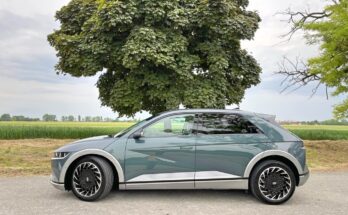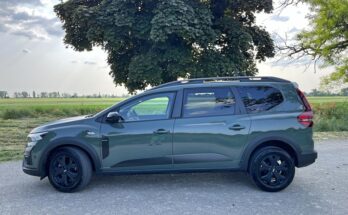Skoda Octavia RS 245, currently the most powerful Octavia and our editorial vehicle last week. The Octavia model is a very popular car among drivers, which has a wide range of users. It is also the dream of many a large family, as the result is still a fairly affordable car that offers very good workmanship, a wide range of engines and, last but not least, a large interior space.
Octavies with the RS designation have always been the imaginary pinnacle of this model. And it is no different with the tested car. Add a powerful engine to all the positives mentioned above.

RS 245 and its external appearance
My original unsteadiness of opinion in the slightly controversial four-eyed design of her bow, moved quite quickly to the side of the supporters of this appearance. Moreover, in the context of the "heresy" design and its sharply cut lines, this treatment of the front lamps makes a little more sense than with the classic, more popular versions. You can recognize the RS 245 by the black painted accessories such as the rear-view mirrors, exhausts, radiator grille or the black "cap" in front of the RS inscription (on other RS the cap is green). The nineteen-inch wheels, which have very distinctive holes in terms of size and shape, are a design highlight. In terms of external design, the current form of the "heresy" Octavia is clearly successful.
The dynamic features of the RS model are clearly visible and unmistakable from the car, yet I really appreciate how understated the car looks as a result. The front part has a wider radiator grille, or a newly shaped, wider bumper. The rear part also looks very simple and clean, yet you feel a certain ferocity from it, which is provided by elements such as black exhaust tips integrated into the black diffuser of the bumper, or the rear spoiler.
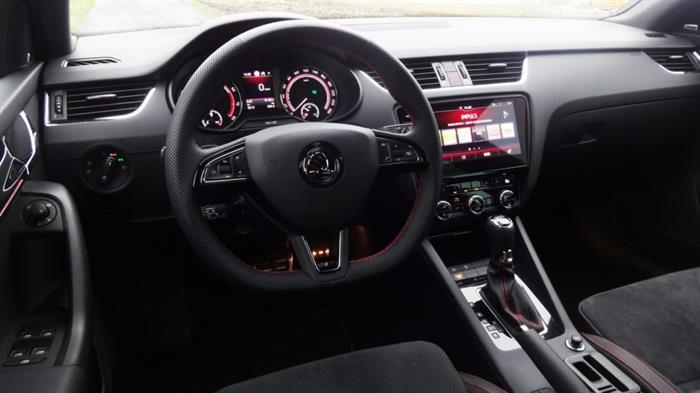
Interior
The interior of the car naturally offers you all the elements of a classic Octavia, which are mainly dominated by a large interior space. The space on the back seats and in the luggage compartment is what vehicles of this brand are famous for. High-quality materials used and excellent interior ergonomics are other attributes that we have already become accustomed to from the Skoda car manufacturer.
The RS 245 has a strictly black interior, which is enlivened only by the red lining of individual interior elements, such as the steering wheel, the automatic transmission selector, or the seats themselves with the RS inscription. These are produced in a combination of alcantara and leather. The front seats with a sporty appearance do have lateral guidance, but in the end it is a certain compromise between their sportiness and practicality. I definitely wouldn't be afraid to travel in them on a longer route. The somewhat austere (but only good for me) dashboard is dominated by the on-board infotainment display, for the tested version it was the Columbus system with a 9.2-inch wide touchscreen. The entire system can of course be connected to the Internet using a mobile phone or SIM card. You can then learn a lot of interesting information about your vehicle via the web interface via Skoda Connect. Another interesting feature of the RS 245 is the possibility of a certain personalization of the car's settings. The Octavia RS 245 is no exception and yes, it too has many clever solutions. Personally, I most appreciated its rich network program, which is available in the traditionally voluminous luggage compartment.
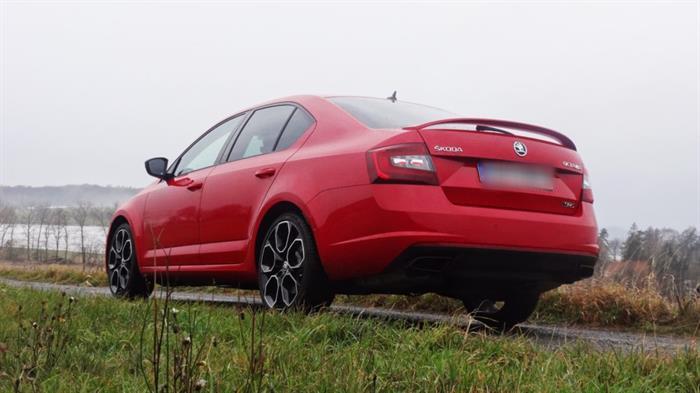
Motorization and driving characteristics
The basis of this Skoda rocket is a turbocharged four-cylinder two-liter TSI, which, however, has many original components. Compared to the weaker petrol heresy version, it is equipped with a different exhaust, intake, pistons or a completely different turbo. The new turbo features new technology, which unfortunately deprived the RS 245 of the "shooting into the exhaust" effect.
The tested RS 245 has, as the name suggests, 245 horses (180 kW). The basic gasoline "ereso" will offer "only" 169 kW, and the diesel will then offer 135 kW. All engines are connected to both automatic and manual transmissions, the diesel version is also available with 4×4 drive.
The car we tested was equipped with a seven-speed DSG automatic, which clearly worked perfectly. It is the DSG automatic and the DCC adaptive chassis that result in enormous versatility and can offer you several driving positions of the car. From Eco, Comfor, Normal, to Sport and Individual modes. These are all positions where the transmission, steering, throttle response and chassis behave differently. From a calm, gently handling car to a sharp beast that gives automatic intermediate gases when downshifting. These are all RS 245 positions.
The power of 180 kW is transmitted only to the front axle, so the RS 245 is equipped with an electro-hydraulic self-locking front axle differential (VAQ) system, which ensures the car's smooth transfer of torque, in the context of sufficient traction.
The VAQ has an electro-hydraulically controlled plate clutch, which in principle resembles a Haldex inter-axle clutch. It is located between the differential and the right half of the drive axle and, depending on the current situation, can send up to 100% of the driving force to one of the front wheels.
My last driving experience with a powerful Skoda was with the 206 kW Superb Sportline, which also had a two-liter TSI and a DSG automatic transmission. Its currency, at least for me, was its 4×4 drive. Transferring this power to both drive axles seems to me to be simply more balanced in terms of driving performance.
I assume that I used 90% of the performance of the tested Octavia due to the current bad weather, the reserve was definitely there. Nevertheless, but within the framework of test drives, it created more than one wrinkle on my forehead. 245 horsepower on the front axle is already known, the VAQ system must be praised here, which distributes the given power between the front wheels absolutely perfectly. It is also worth mentioning the presence of the Launch Control system, which also works flawlessly, but ideally on a dry surface. The chassis of the car is certainly, as I already mentioned, also adaptive. The versatility of the car is also reflected in its consumption, during a leisurely drive you will comfortably move around 9 liters. Purely urban driving will shoot up the consumption to 11 liters, but with each additional sharp kilometer, the consumption quite logically rises.
A bit of honesty wouldn't hurt the car in its audio presentation, in sport mode it deceives you with an artificial sound of the engine, which can of course be turned off, but I would have appreciated far more an active flap of the exhaust pipe.
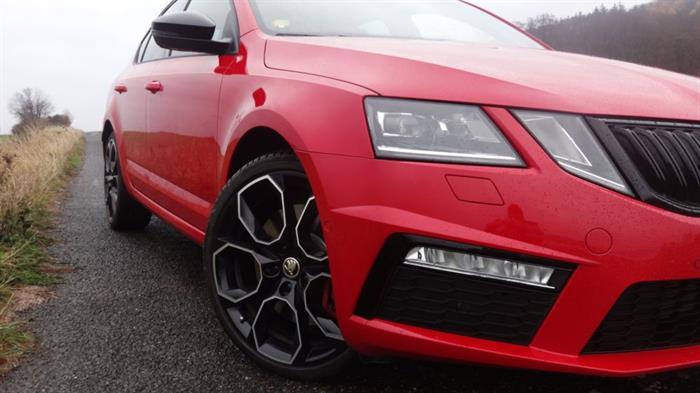
Evaluation
The RS 245 with a six-speed manual starts at CZK 766,900, while the seven-speed DSG automatic starts at CZK 816,900. Additional equipment in the form of, for example, a heated windshield, parking assistant, Canton sound system, heated front and rear seats, nineteen-inch XTREME wheels, or the Multimedia Package, Traveler Assist, can still make a nice splash with the purchase price.
Skoda Octavia RS 245 is the imaginary cherry on the cake of this model. What I value most about her is her versatility. This is a car with several faces. Its adaptive chassis can be very comfortable on the one hand and very stiff and sporty on the other in the context of nineteen-inch wheels with low-profile shoes. You then get a very powerful car in your hands, which can train your driving skills.































